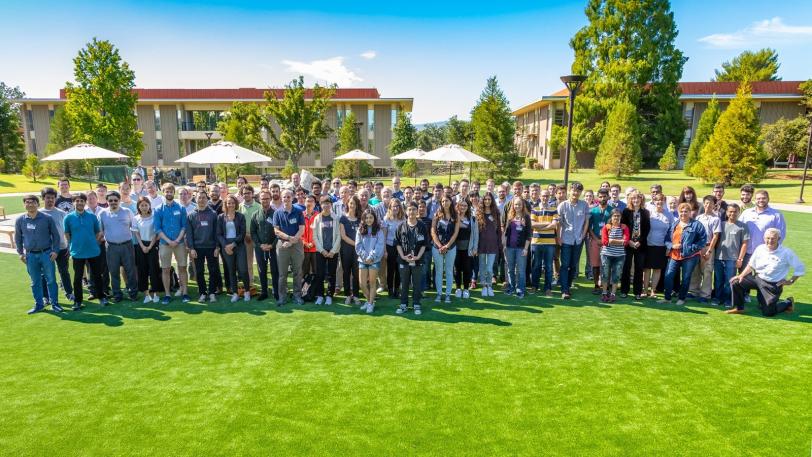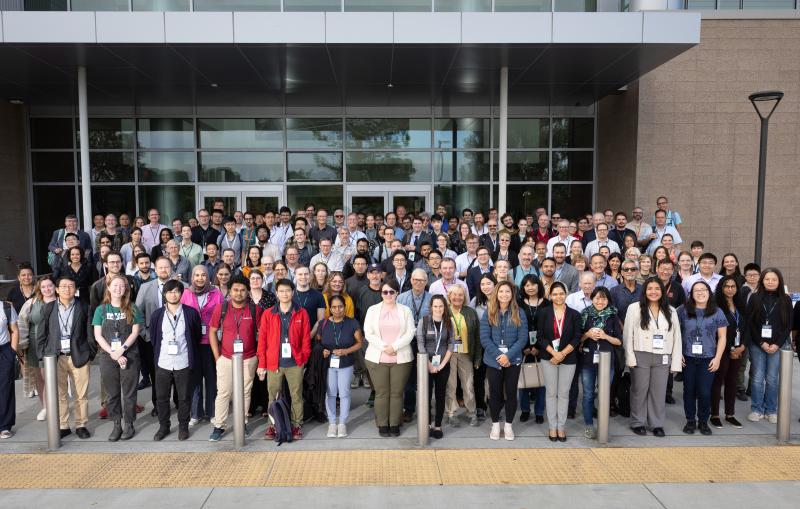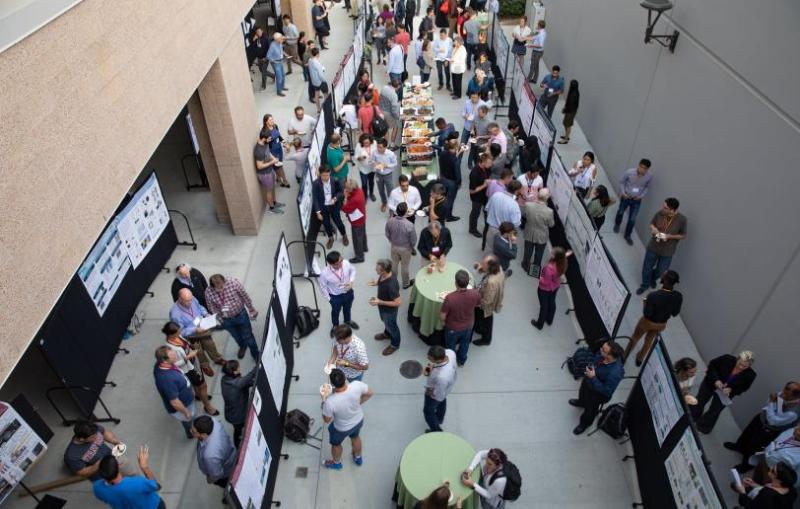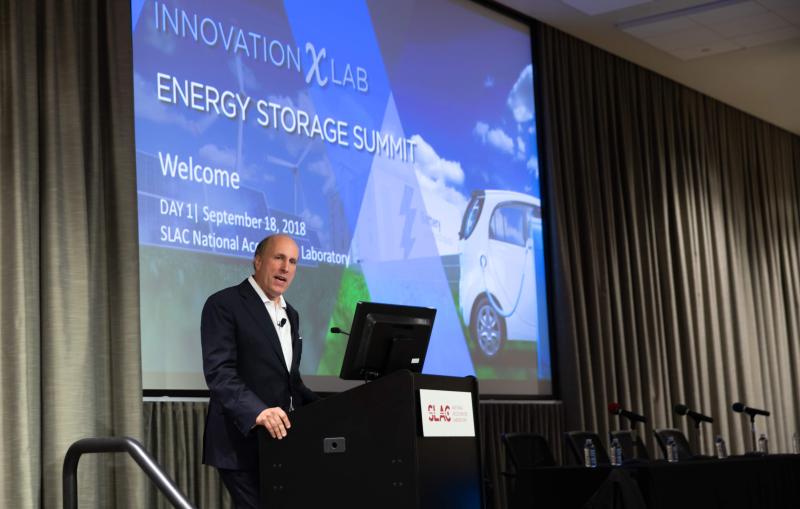46th annual SLAC Summer Institute celebrates Standard Model at 50
The event attracted 124 participants and explores the successes and challenges of the theory that describes subatomic particles and fundamental forces.
By Manuel Gnida
World famous Nobelist Steven Weinberg opened the 46th edition of the annual SLAC Summer Institute (SSI) by traveling half a century back in time and telling participants about an exciting era in physics when researchers feverishly developed a theoretical description of subatomic particles and fundamental forces known as the Standard Model of particle physics.
SSI 2018 – held at the Department of Energy’s SLAC National Accelerator Laboratory from July 30 to Aug. 10 – celebrates 50 years of successes and challenges of this model. Weinberg, who joined the summer school via video conference, is one of the key figures in the development of the Standard Model. His contributions earned him the 1979 Nobel Prize in physics, alongside fellow theoretical physicists Abdus Salam and Sheldon Glashow.
“It’s very exciting that we get to celebrate the 50th anniversary,” says SLAC’s Charles Young, one of the summer institute’s organizers. “The Standard Model has been very successful in explaining many aspects of fundamental physics in great detail, but there are also many things we still need to learn.” The theory doesn’t have answers for a number of mysteries, including dark matter, the mass of neutrinos and the dominance of matter over antimatter, nor does it contain a description of gravity.
The event’s packed schedule includes lectures, conference talks and discussion sessions that cover all aspects of the Standard Model – from the earliest developments of the theory to crucial experimental confirmations to the biggest open questions. The 124 participants, mostly graduate students and postdoctoral researchers, will also work on student projects while attending the summer school.
“The workshop is a great opportunity to see the full picture of the field of particle physics,” says Irene Dutta, a graduate student at the California Institute of Technology working on the CMS experiment at CERN. “It’ll be very helpful in finding out which research topics I might want to pursue in the future.”
Luis Zazueta, a graduate student at the College of William & Mary working on the MINERvA neutrino experiment, says, “It’s exciting to be here and learn about the Standard Model outside the classroom environment. It’s also great to look beyond my own research topic, meet other people and see what they’re working on.”
This year’s SSI is dedicated to the late Burton Richter. The former SLAC director, who won the 1976 Nobel Prize in physics together with Samuel Ting for a discovery that confirmed the existence of the charm quark in the Standard Model, passed away July 18.
Contact
For questions or comments, contact the SLAC Office of Communications at communications@slac.stanford.edu.
SLAC is a multi-program laboratory exploring frontier questions in photon science, astrophysics, particle physics and accelerator research. Located in Menlo Park, Calif., SLAC is operated by Stanford University for the U.S. Department of Energy's Office of Science.
SLAC National Accelerator Laboratory is supported by the Office of Science of the U.S. Department of Energy. The Office of Science is the single largest supporter of basic research in the physical sciences in the United States, and is working to address some of the most pressing challenges of our time. For more information, please visit science.energy.gov.






